Introduction
In the dynamic world of textile printing, Direct-to-Film (DTF) transfers have emerged as a game-changer, offering unparalleled versatility and durability. This article delves into the essential aspects of mastering DTF transfers, from selecting the right film and ink to ensuring impeccable print quality and longevity. Discover how to optimize artwork, calibrate your printer, and apply adhesive powder effectively.
Learn the nuances of heat press settings for different fabrics and follow a step-by-step guide to perfect your DTF transfer process. Additionally, explore post-processing techniques and gain insights into common mistakes and troubleshooting tips. Whether for small-scale projects or large production runs, harness the benefits of DTF transfers to create vibrant, long-lasting designs that stand the test of time.
Choosing the Right DTF Film and Ink
Selecting the appropriate DTF film and ink is essential for attaining vivid colors and durable prints. High-quality films that seamlessly integrate with your printer are essential. Equally important is using inks specifically formulated for DTF applications. Factors such as opacity, flexibility, and adhesion strength are crucial in determining the best film and ink combination for your projects. Conducting trials is vital before scaling up production. By experimenting with various materials and adjusting heat press settings, you can refine the process to guarantee outstanding print quality and durability. As one expert noted, 'DTF applications are easier, cleaner, brighter, more durable, and more flexible than any method you've worked with before.' This testing phase is indispensable for understanding how various fabrics behave under heat and pressure, ultimately leading to superior and long-lasting results.

Preparing Artwork for DTF Transfers
Enhancing your artwork for DTF printing guarantees vivid and precise results. Start by using a resolution of at least 300 DPI to maintain clarity and detail. Set your colors to CMYK to match the printing process accurately. It's vital to verify that your layout matches the measurements of the delivery zone to prevent any cropping problems.
For the best results, consider working with vector graphics. Unlike raster images, vector graphics are based on mathematical formulas defining lines and shapes, allowing them to be scaled infinitely without losing quality. This means your layout will remain crisp and sharp, no matter the size of the transfer. Illustrator's latest updates, such as the improved Mockup tool, enhance this process by allowing for better integration of vector art with the contours of fabric, making your workflow smoother and more efficient.
Calibrating Your Printer for DTF Transfers
Ensuring your printer is properly calibrated is crucial for achieving top-notch color accuracy and print quality. Adjust settings like print speed, ink density, and resolution to match the specifications of your DTF film and ink. Regularly checking alignment and nozzle conditions is essential for consistent performance. Implementing a robust quality control process can help prevent customer dissatisfaction and returns. This includes inspecting prints for clarity, color accuracy, adhesion, and any signs of cracking or peeling. Paying attention to the edges of the print, where lifting might occur, is also important. Maintaining your equipment, such as printers and heat presses, in optimal condition ensures a consistent quality output. Training staff to identify and fix common printing issues can further uphold high standards. Utilizing a quality control checklist can provide a standard for employees, ensuring every product meets expectations. The Procolored A4 DTF printer exemplifies how advanced technology can enhance the printing process, offering precision and quality for a broad range of apparel sizes.
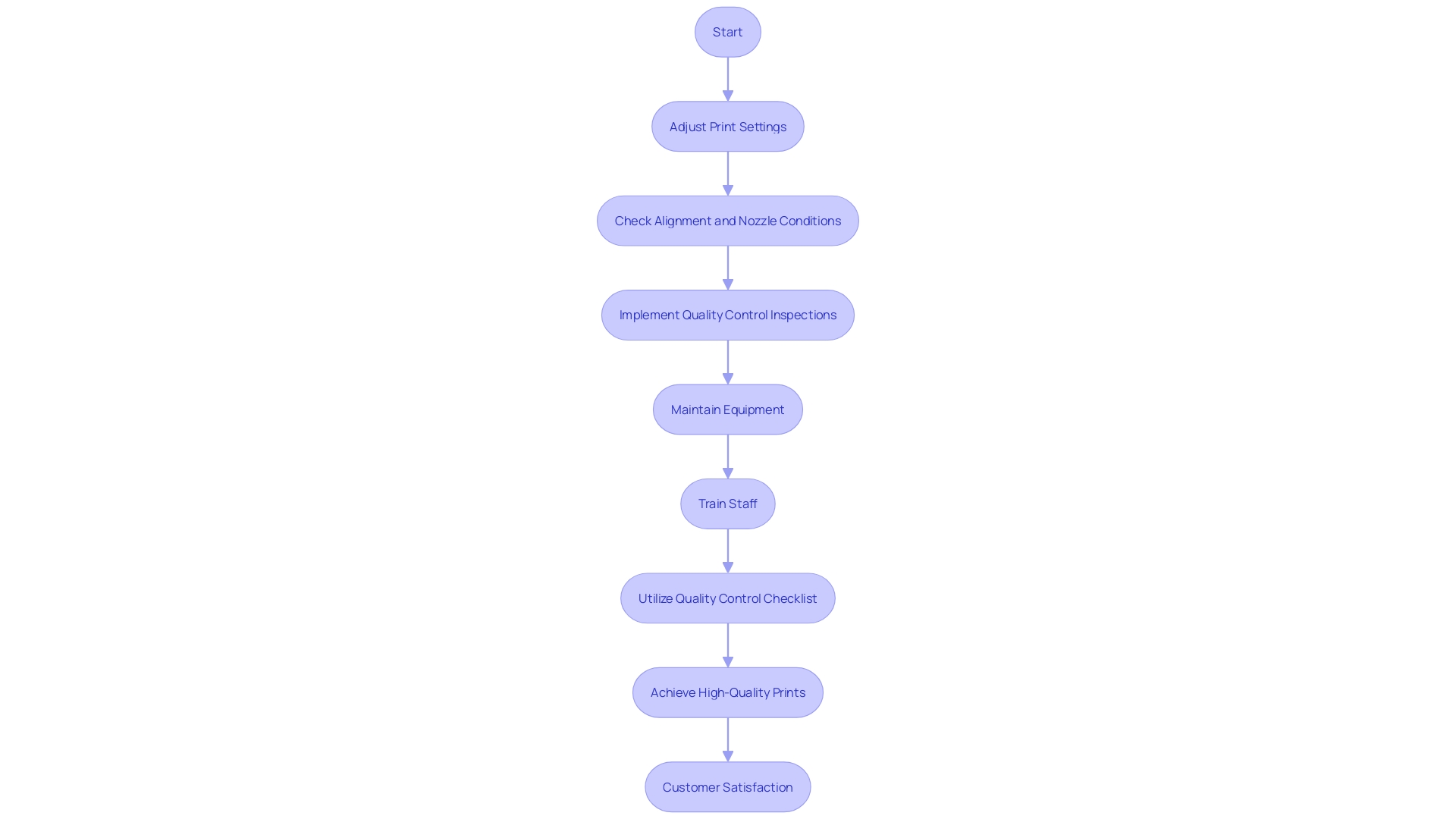
Applying Adhesive Powder and Pre-pressing Fabrics
Once your creation is printed onto the DTF film, the next crucial step is applying the adhesive powder. This powder ensures the durability and flexibility of the final product, as highlighted by the impressive results from stretch tests showing no cracking and minimal degradation even after 50+ washes. To apply the adhesive powder, evenly sprinkle it over the wet ink, making sure every part of the design is covered. Then, gently shake off any excess powder to avoid clumps. Before proceeding to the heat transfer process, pre-press the material. This step is vital as it removes any moisture and sets the adhesive, ensuring a stronger bond during the final pressing. This process is not only straightforward but also guarantees a bright, clean, and long-lasting result, making your custom apparel stand out.
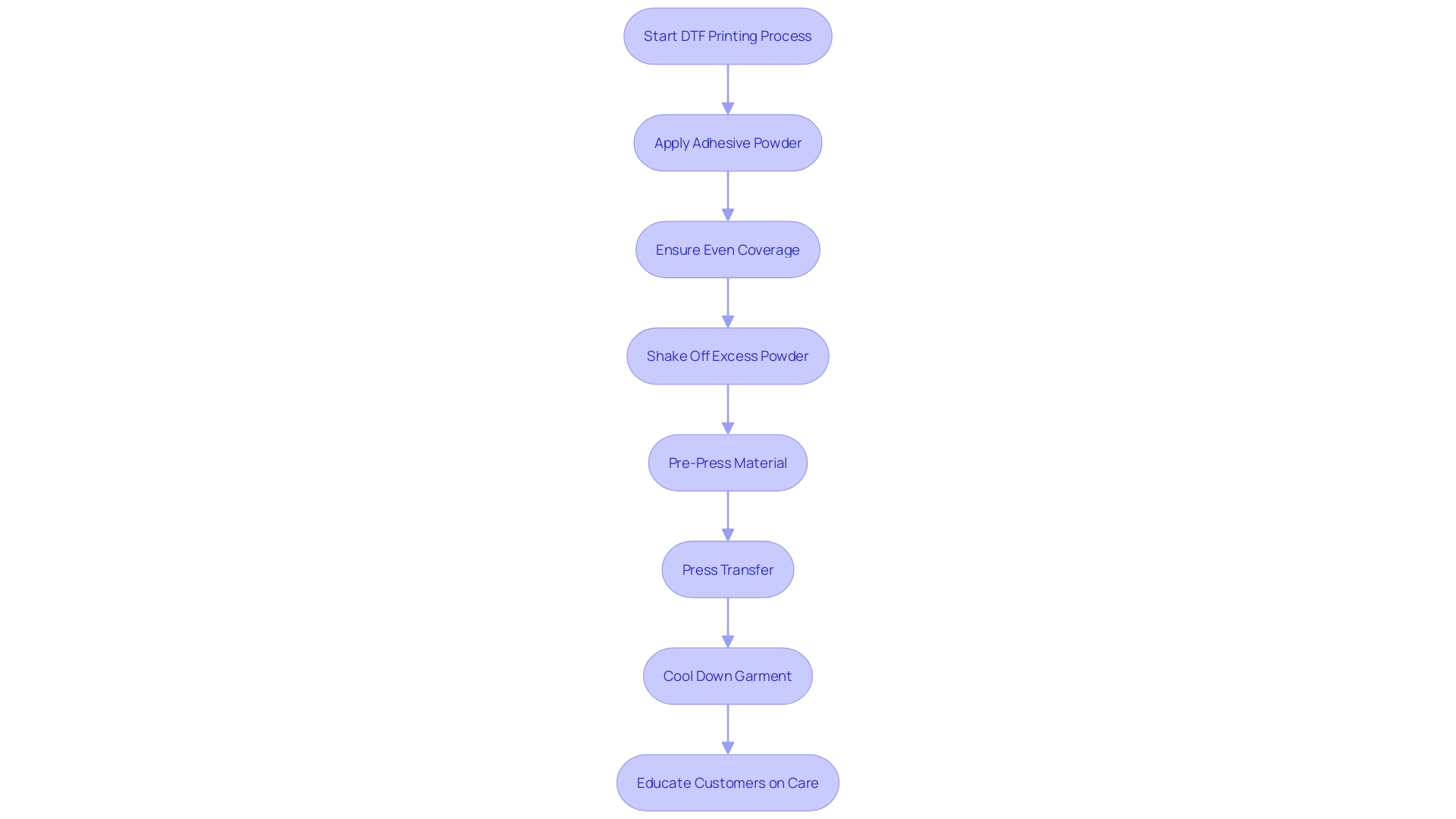
Optimizing Heat Press Settings for Different Fabrics
Various textiles require particular heat press adjustments to attain optimal outcomes. For instance, cotton and polyester blends generally respond well to a temperature of around 320°F applied for 10-15 seconds. However, delicate materials require more careful handling; adjusting the temperature and time is crucial to prevent any damage. Testing on a scrap piece of material can help fine-tune the settings to perfection before committing to the final design. This approach not only ensures optimal outcomes but also minimizes material waste and contributes to more sustainable production practices.
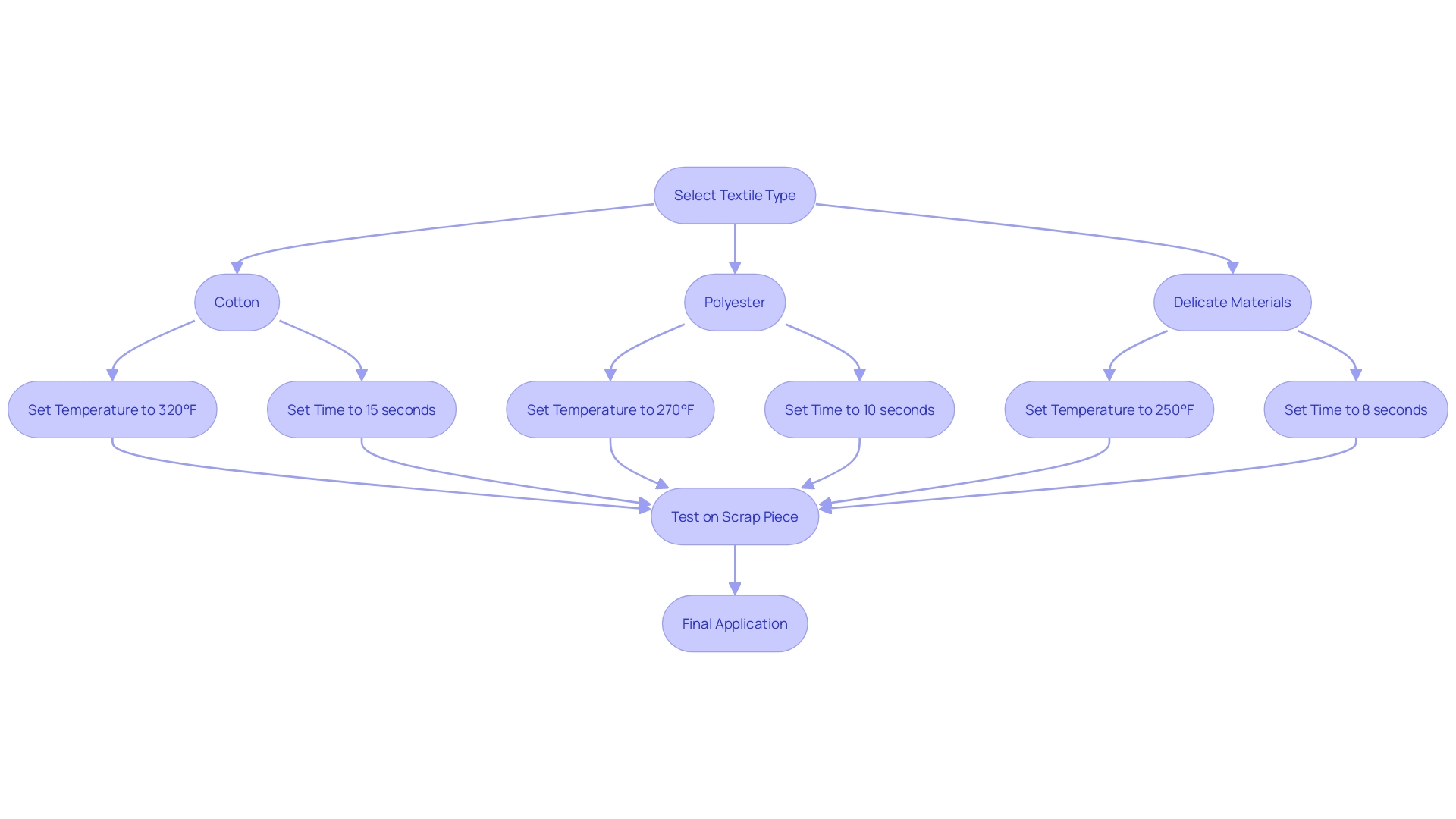
Step-by-Step Guide to Applying DTF Transfers
- Begin by preheating your heat press to the recommended temperature for optimal results. 2. Position your material on the heat press and perform a brief pre-press for a few seconds to remove any moisture and wrinkles. 3. Place the DTF application on the material with the printed side facing down, making sure it is aligned properly. 4. Apply the specified heat and pressure based on your fabric type, ensuring the pattern adheres well. 5. Allow the movement to cool slightly before carefully peeling the film away, revealing a vibrant and durable design that won’t crack or fade, even after multiple washes.
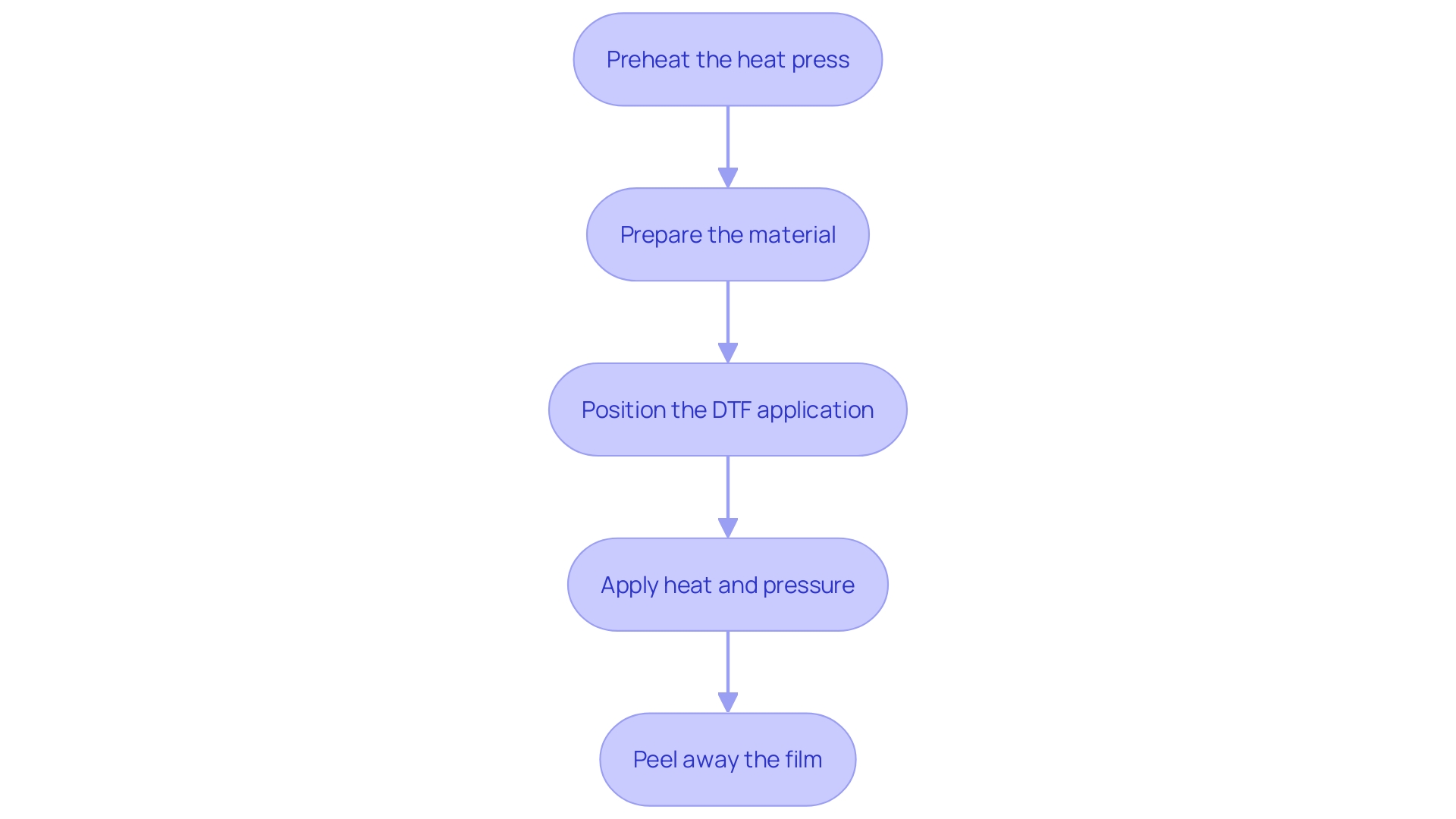
Post-processing and Finishing Solutions for Durability
To improve the durability of your DTF prints, you should consider applying a protective coating or heat sealing after application. This extra step helps to prevent common issues such as cracking and fading over time. Regular care instructions, such as washing in cold water and avoiding bleach, can also significantly extend the life of your custom transfers.
Comprehending the unique features of various textiles is essential for obtaining the optimal outcomes. Natural fibers like cotton typically absorb the ink more effectively, providing a stronger bond. On the other hand, synthetic fibers such as polyester require a more nuanced approach, often necessitating lower heat settings or adjusted pressing times to ensure proper adhesion without damaging the material.
Experimentation and testing are key. Before starting large-scale production, it's advisable to conduct trials with the selected fabric. This helps in fine-tuning the heat press settings and assessing the overall look and feel of the print on different materials. Taking these steps not only enhances the appearance of the prints but also improves their longevity.
After the relocation process, immediate care is essential. Lay the garment flat and allow it to cool down to prevent any potential damage. By adhering to these guidelines, you can guarantee that your DTF prints stay vibrant and durable for a prolonged duration.
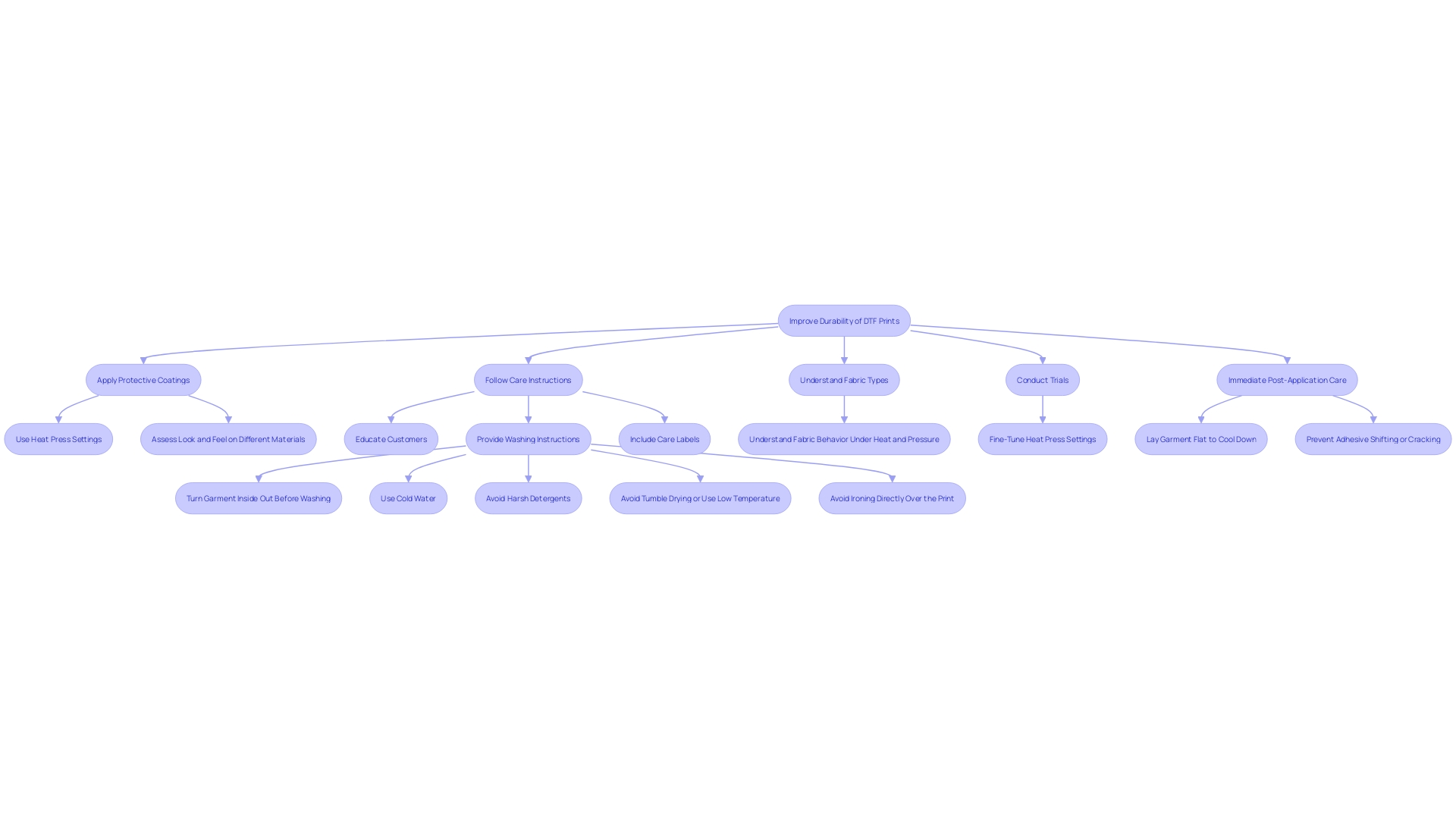
Common Mistakes and Troubleshooting Tips
To ensure the best outcomes with your DTF prints, pay close attention to common pitfalls like incorrect temperature settings, insufficient pressure, or using the wrong type of DTF film. If you notice issues such as peeling or fading, revisit your process, including printer calibration and pre-pressing techniques. Keeping a detailed log of both successful and unsuccessful attempts can be invaluable in refining your approach. Remember, DTF applications are designed to be durable, surviving over 50 washes with minimal degradation, thanks to the combination of film, ink, powder, and pressing process. Regular calibration and maintenance of your equipment play a significant role in maintaining quality, ensuring your prints remain vibrant and intact. Embrace the boundless potential of DTF methods to create remarkable creations that endure through the ages.
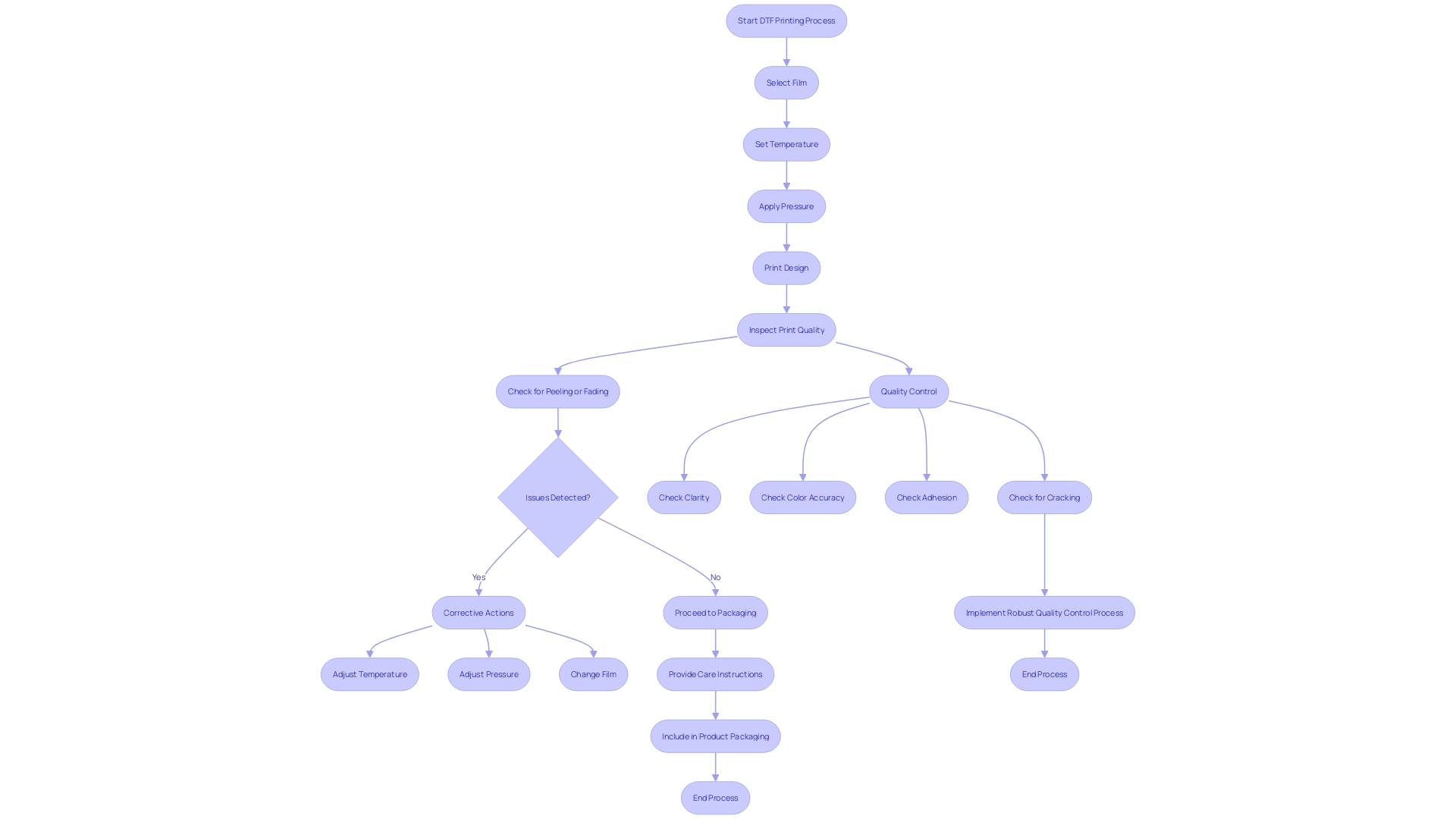
Benefits and Versatility of DTF Transfers
DTF prints offer unmatched flexibility for personalizing a variety of textiles, including cotton, polyester, and blends. These exchanges provide vivid hues and complex patterns that genuinely distinguish themselves, no matter the material shade. The vibrancy and brightness of the designs will consistently impress, making DTF applications an excellent choice for both small-scale projects and larger production runs.
The durability of DTF prints is exceptional. They can withstand over 50 washes with minimal degradation, thanks to the combination of film, ink, powder, and pressing process used. This durability is further demonstrated by the stretch test, which shows no cracking within reasonable limits. The flexibility and resilience of DTF prints make them a reliable option for long-lasting, professional-quality results.
Moreover, DTF applications are easier, cleaner, and more flexible than traditional methods. They offer limitless design capabilities, allowing for rapid prototyping and custom design options. This method also aligns with sustainability trends, as it utilizes environmentally friendly ink formulations, contributing to the reduction of the textile industry's significant environmental impact.
In summary, DTF transfers not only enhance the aesthetic appeal of customized fabrics but also ensure durability and sustainability, making them a superior choice for modern textile printing needs.
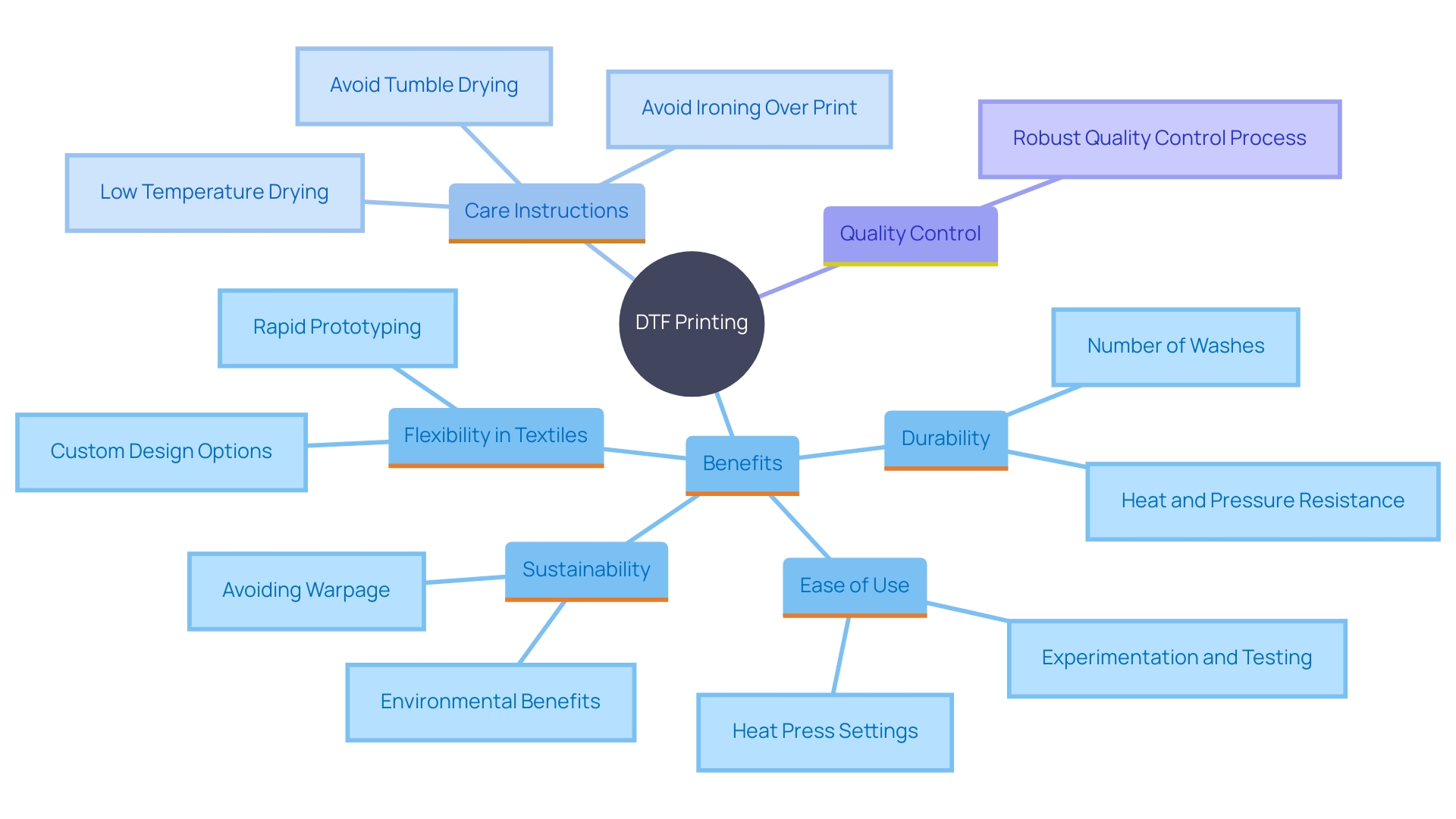
Conclusion
The exploration of Direct-to-Film (DTF) transfers reveals a remarkable opportunity for achieving high-quality, durable, and vibrant designs on various fabrics. Choosing the right film and ink is essential, as it directly impacts the transfer's color accuracy and longevity. Conducting trials and optimizing artwork are crucial steps in the process, ensuring that the final product meets expectations in clarity and detail.
Calibrating printers for DTF applications and applying adhesive powder correctly are pivotal for achieving optimal results. By fine-tuning heat press settings tailored to different fabrics, users can enhance the quality of their transfers while minimizing waste. The step-by-step guide to applying DTF transfers provides a clear pathway to success, ensuring each design adheres perfectly and maintains its integrity over time.
Attention to post-processing techniques and troubleshooting common mistakes further solidifies the reliability of DTF transfers. With their exceptional durability and versatility, DTF transfers stand out as a modern solution for both small-scale projects and larger production runs. Embracing these techniques not only elevates the final product but also contributes to sustainable practices in the textile industry, marking a significant advancement in custom apparel creation.




